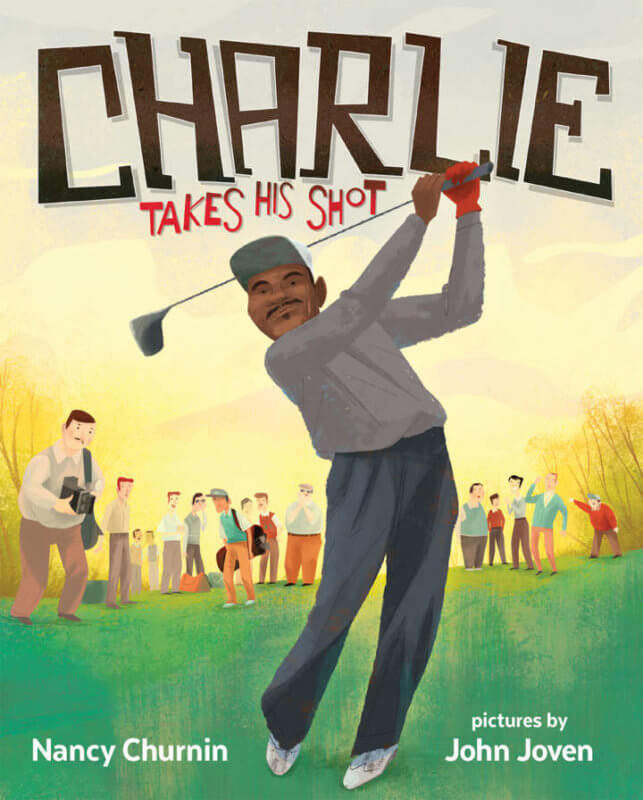12 Jan / Charlie Takes His Shot: How Charlie Sifford Broke the Color Barrier in Golf by Nancy Churnin, illustrated by John Joven [in Shelf Awarenss]

 African American legends like Serena Williams and Michael Jordan are household names, but not long ago, professional sports were strictly segregated. Jackie Robinson broke Major League Baseball’s color barrier in 1947; the National Basketball Association allowed Earl Lloyd to play in 1950; Brown v. Board of Education integrated U.S. public schools in 1954. Golf, however, took longer to reach racial par for the course.
African American legends like Serena Williams and Michael Jordan are household names, but not long ago, professional sports were strictly segregated. Jackie Robinson broke Major League Baseball’s color barrier in 1947; the National Basketball Association allowed Earl Lloyd to play in 1950; Brown v. Board of Education integrated U.S. public schools in 1954. Golf, however, took longer to reach racial par for the course.
Charles Luther Sifford “knew he was born to play” golf. But most greens were whites-only, so Sifford initially worked as a caddie. When he played, however, he won: Sifford was the “United Golf Association’s National Negro Open [champion] so many times – from 1952 to 1956 and again in 1960 – they told him to keep the trophy.” Emboldened by his friend and advocate Jackie Robinson, Sifford worked tenaciously to become the first African American to break into the Professional Golfers’ Association (PGA). He joined in 1961, and won his first PGA tournament in 1967. “Charlie … opened a door for others”; decades later, even Tiger Woods “credit[s] Sifford for making his career possible.”
Author Nancy Churnin, theater critic for the Dallas Morning News when she’s not writing children’s books, introduces the youngest readers to a sports pioneer who undoubtedly deserves greater attention. Her youth-tempting narrative highlights the excitement of Charlie’s feats – how he played under “the blue sky at dusk” on greens from which he was barred – while teaching the history of what Charlie endured and nevertheless achieved. Artist John Joven’s energetic illustrations underscore Charlie’s determination and dedication, always in motion toward meeting his goals. An author’s note and timeline provide further illuminating details about Charlie’s remarkable life. Inspiring and informative, Churnin and Joven ensure Charlie wins.
Discover: As a boy, African American golfer Charles Luther Sifford “could strike the ball farther and truer than anyone,” but it wasn’t until he was 39 that he was allowed to play – and later win – in the PGA.
Review: “Children’s & Young Adult,” Shelf Awareness, January 12, 2018
Readers: Children
Published: 2018
